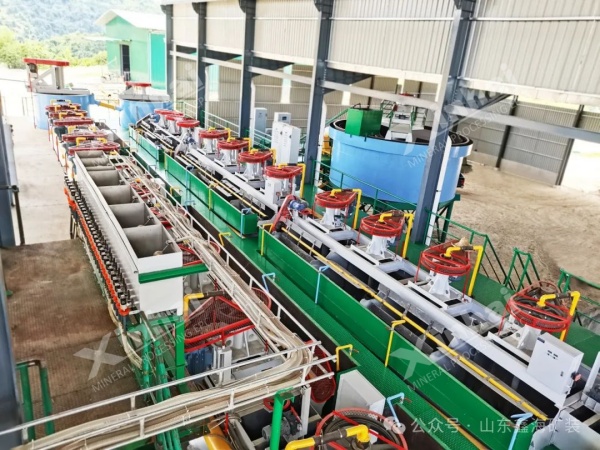If you want to know more information (such as product/process price, etc.), please contact us 24-hour telephone
In lead-zinc ore processing, every 1% increase in recovery rate can bring significant economic benefits. As a professional provider with 20 years of EPCM+O experience, we analyze seven efficient combined flotation processes based on practices from over 200 mines worldwide. This will help you accurately match the best process to your needs.
Applicable Scenarios: Suitable for ores with significant differences in lead and zinc floatability (ΔpH > 2) and coarse dissemination (+0.15mm > 60%).
Process Flow:
Lead roughing (pH 8-9, xanthate + pine oil) → three times cleaning → lead concentrate.
Zinc activation (copper sulfate conditioning) → zinc roughing (pH 10-11, xanthate + MIBC) → four times cleaning.
Technical Advantages:
Sequential recovery of lead and zinc avoids cross-contamination of reagents.
Cleaning stages achieve recovery rates of up to 92% for lead and 88% for zinc.
Technological Breakthroughs:
Development of synchronous collectors for lead and zinc (e.g., LP-01 composite reagents).
Use of stepwise concentration adjustment techniques (35% for roughing → 25% for cleaning).
Process Highlights:
Mixed roughing (pH 7.5-8.5) → re-grinding (-325 mesh 90%) → lead-zinc separation.
Zinc concentrate desulfurization using ultrasonic pre-treatment, increasing sulfur removal by 40%.
Economic Comparison: Saves 15-20% on reagent costs compared to traditional processes.

Key Technical Parameters:
Mixed flotation stage controls pulp potential at +150mV (suppressing zinc minerals).
Re-grinding fineness should reach -400 mesh 85% or higher.
Innovative Applications:
Introduction of microbubble flotation columns to treat pulps with sulfur content >15%.
Use of selective grinding techniques to reduce over-grinding.
Process Design Points:
Establish a dynamic pH control system (precision ±0.2).
Develop gradient adsorption-type depressants (e.g., DMDC series).
Industrial Case: In Inner Mongolia, a difficult-to-treat ore achieved a zinc recovery rate exceeding 91% after applying this method.
Three-Stage Grinding and Flotation Configuration Suggestions:
StageGrinding FinenessFlotation ConcentrationKey Equipment
First-200 mesh 65%32%Ball mill + hydrocyclone set
Second-400 mesh 85%28%Vertical mill + flotation column
Third-500 mesh 95%25%Ultrafine grinding + microbubble generator
Benefit Enhancement: Reduces metal loss rate by 5-8 percentage points.
Latest Technological Integration:
Use of online particle size analyzers to dynamically adjust grinding parameters.
Application of machine vision systems to monitor flotation froth characteristics in real-time.
EPCM Implementation Points:
Establish a digital twin model during the pilot stage.
Install an intelligent dosing system (error < ±3%).
Quick Matching Based on Ore Characteristics:
Sulfur content >12% → Lead-sulfur mixed flotation method.
Pb/Zn floatability difference <0.5 → Equal flotation method.
Dissemination size -400 mesh >70% → Segment grinding and segment flotation method.
Oxidation rate >30% → Priority flotation + chelating collectors.
Technological integration creates value. Our EPCM+O services provide comprehensive solutions from ore characteristic analysis to laboratory verification and integration of intelligent control systems. Recently developed AI dynamic optimization systems can adjust process parameters in real-time, controlling recovery rate fluctuations within ±0.5%.